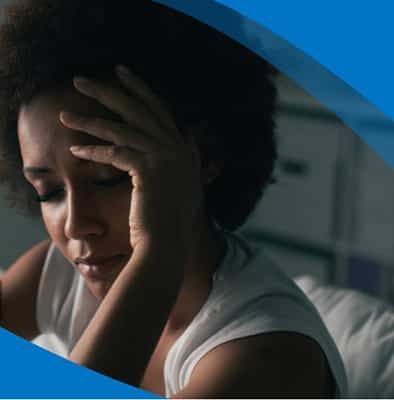There has been a flood of opioids into the black market over the past 10 years due in large part to both their overprescription and a severe lack of oversight in monitoring those prescriptions. This increased supply has created significant demand and misuse, and one of the most commonly abused opioid medications on the market today is Tramadol..
What Is Tramadol?
Tramadol is an opioid medication used to treat moderate chronic and acute pain. While it is injectable, it more commonly comes in tablet form and it is often combined with over-the-counter medications like paracetamol.
What Makes Tramadol So Dangerous?
Tramadol is unique in terms of both its effects and dangers. Unlike other opioid medications, . Serotonin reuptake inhibitors (SSRIs) and serotonin-norepinephrine reuptake inhibitors (SNRIs) are used as antidepressant treatments, which means Tramadol has a wide range of effects on users’ brain chemistry.
Is Tramadol Deadly?
Yes, Tramadol is a potentially dangerous opioid medication that, like other opioids, can cause lethal overdoses if taken in excess. A Tramadol overdose happens when the brain is overloaded by opioids; overstimulating the brain’s opioid receptors can briefly suppress and, if the dose is strong enough, even halt the body’s ability to breathe. While this effect is temporary, it only takes 3-5 minutes without oxygen to kill the average human being, making Tramadol overdoses extremely dangerous and life-threatening.
Tramadol Contradictions
Because Tramadol’s effects range from pain alleviation to antidepressant, there is a large list of commonly used drugs that, when combined with Tramadol, pose serious and even life-threatening risks to users.
Tramadol can pose life-threatening risks when combined with monoamine oxidase inhibitors (MAOIs), selective serotonin reuptake inhibitors (SSRIs), serotonin-norepinephrine reuptake inhibitors (SNRIs), tricyclic antidepressants (TCAs), alcohol, anti-psychotics, CYP2D6 and/or CYP3A4 inhibitors and any triptans.
Drug addicts often suffer from both mental illness and substance use disorder problems. If users are already prescribed one of the above-mentioned medications for their mental illness and combine it with recreational Tramadol use, the results could be fatal.
Short-term and Long-term Effects of Tramadol
Short Term Effects Of Tramadol
- Dizziness
- Headache
- Drowsiness
- Nausea and vomiting
- Constipation
- Lack of energy
- Sweating
- Dry mouth
- Seizures
- Coma
Long Term Side Effects Of Tramadol
- Sleep problems
- Hormone disruption
- Physical dependence
- Social problems
- Lack of motivation
- Lower quality of life
Overdose Symptoms of Tramadol
Serotonin Syndrome- Because Tramadol is an SSRI, it has the potential to flood the brain with serotonin. When combined with other medications such as antipsychotics that lower the seizure threshold, Tramadol has the potential to induce life-threatening seizures due to Serotonin Syndrome.
As we’ve mentioned above, Tramadol overdoses can be lethal. Signs of an overdose include:
- Loss of consciousness
- Unresponsive to outside stimulus
- Awake but nonverbal
- Slow, shallow, erratic breathing
- Choking sounds. This can sound similar to a snore and is compared to a gurgling noise (sometimes called the “death rattle”)
- Vomiting
- Limp body
- Pale, clammy skin
- Pulse (heartbeat) is slow, erratic, or absent altogether
Signs of Tramadol Addiction
If you suspect a loved one is addicted to Tramadol, keep an eye out for these signs of addiction:
- The inability to control Tramadol use
- Uncontrollable cravings
- Drowsiness
- Changes in sleep habits
- Weight loss
- Frequent flu-like symptoms
- Decreased libido
- Lack of hygiene
- Changes in exercise habits
- Isolation from family or friends
- Stealing from family, friends or businesses
- New financial difficulties
Tramadol Withdrawal Symptoms
Opioids are physically addictive, which means the body comes to rely on medications like Tramadol. Without it, users can experience uncomfortable and even life-threatening symptoms such as:
- Muscle aches
- Restlessness
- Anxiety
- Lacrimation (eyes tearing up)
- Runny nose
- Excessive sweating
- Inability to sleep
- Yawning very often
- Diarrhea
- Abdominal cramping
- Goosebumps on the skin
- Nausea and vomiting
- Dilated pupils and possibly blurry vision
- Rapid heartbeat
- High blood pressure
Tramadol Addiction Treatment
Because Tramadol has the potential to induce life-threatening withdrawal symptoms, inpatient rehab treatment is important to consider when looking at treatment options.
What Is Inpatient Rehab For Tramadol Addiction?
Inpatient rehabilitation involves patients staying at a treatment center for several days/weeks under the direct supervision of medical and mental health professionals. This is absolutely critical for the first several days of Tramadol withdrawals, as this is when most lethal side-effects occur.
Optimal inpatient rehab includes personalized medical treatment plans along with individualized personality assessments so as to gauge which activities will help patients best avoid a relapse. When patients combine the will to overcome their addiction with specialized medical care, their chances of recovery improve dramatically, and they increase the odds of taking back their life from the jaws of addiction.
Sources
Medical disclaimer:
Sunshine Behavioral Health strives to help people who are facing substance abuse, addiction, mental health disorders, or a combination of these conditions. It does this by providing compassionate care and evidence-based content that addresses health, treatment, and recovery.
Licensed medical professionals review material we publish on our site. The material is not a substitute for qualified medical diagnoses, treatment, or advice. It should not be used to replace the suggestions of your personal physician or other health care professionals.






